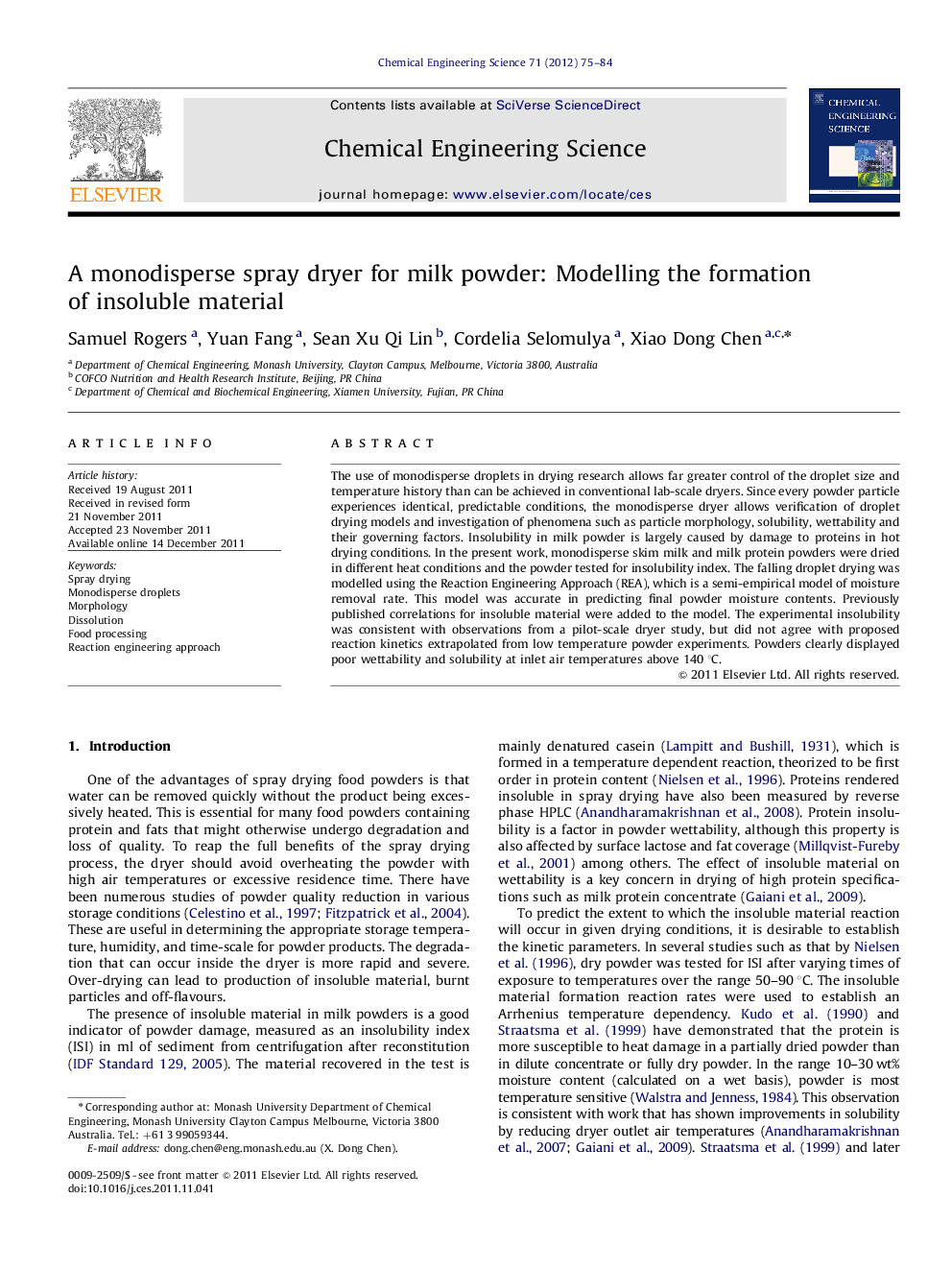| کد مقاله | کد نشریه | سال انتشار | مقاله انگلیسی | نسخه تمام متن |
|---|---|---|---|---|
| 155738 | 456910 | 2012 | 10 صفحه PDF | دانلود رایگان |

The use of monodisperse droplets in drying research allows far greater control of the droplet size and temperature history than can be achieved in conventional lab-scale dryers. Since every powder particle experiences identical, predictable conditions, the monodisperse dryer allows verification of droplet drying models and investigation of phenomena such as particle morphology, solubility, wettability and their governing factors. Insolubility in milk powder is largely caused by damage to proteins in hot drying conditions. In the present work, monodisperse skim milk and milk protein powders were dried in different heat conditions and the powder tested for insolubility index. The falling droplet drying was modelled using the Reaction Engineering Approach (REA), which is a semi-empirical model of moisture removal rate. This model was accurate in predicting final powder moisture contents. Previously published correlations for insoluble material were added to the model. The experimental insolubility was consistent with observations from a pilot-scale dryer study, but did not agree with proposed reaction kinetics extrapolated from low temperature powder experiments. Powders clearly displayed poor wettability and solubility at inlet air temperatures above 140 °C.
► Mono-disperse droplet spray dryer has shown excellent promise in fundamental study.
► Modelling of drying of milk powders in monodisperse spray dryer.
► Predicted final moisture content is in agreement with the experimental data.
► Modelling of insolubility of materials during drying using proposed correlation.
► Experimental insolubility shows the previous correlation needs correction.
Journal: Chemical Engineering Science - Volume 71, 26 March 2012, Pages 75–84